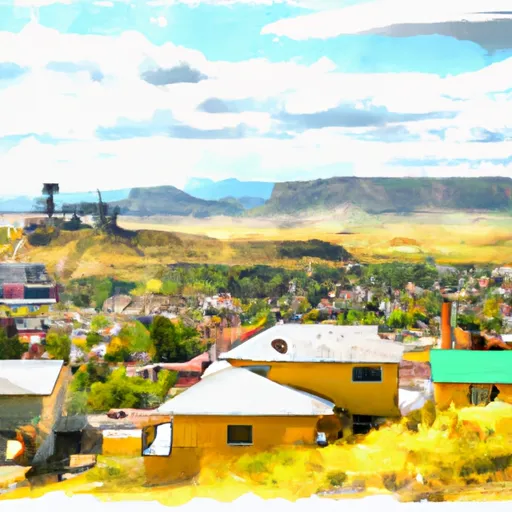-
 Snoflo Premium
Snoflo Premium
Get unlimited access to all our content
With no Ad interruptions! - Start Your Free Trial Login with existing account
Worden
Eden Index
Climate
7.7
•
Recreation
5.6
•
Community
•
Safeguard
5.0/10

Worden, Montana is a small town located in Yellowstone County in the southeastern part of the state. The climate in Worden is classified as semi-arid, with hot summers and cold winters. Temperature extremes can range from below freezing in winter to over 100 degrees Fahrenheit in summer. Precipitation is relatively low, averaging around 14 inches per year, with most of it occurring as snow during winter.
The hydrology constituents in Worden are primarily influenced by the Yellowstone River, which flows nearby. The river provides opportunities for fishing, boating, and other water-based activities. Additionally, there are several smaller creeks and ponds in the area that add to the local hydrology.
Outdoor recreation opportunities in Worden are abundant. The Yellowstone River offers excellent fishing for trout and other species. Hiking and camping are popular in the surrounding area, with scenic trails available for exploration. Wildlife enthusiasts can spot various species, including deer, elk, and birds, in the nearby open spaces. Additionally, hunting, horseback riding, and off-roading are common activities enjoyed by locals and visitors alike.
In conclusion, Worden, Montana experiences a semi-arid climate with distinct seasons. Its hydrology is dominated by the Yellowstone River, providing ample outdoor recreation opportunities for fishing, boating, hiking, camping, and wildlife observation.
What is the Eden Index?
The Snoflo Eden Index serves as a comprehensive rating system for regions, evaluating their desirability through a holistic assessment of climate health, outdoor recreation opportunities, and natural disaster risk, acknowledging the profound impact of these factors on livability and well-being.
Climate Health Indicator (CHI): 7.7
Worden receives approximately
344mm of rain per year,
with humidity levels near 63%
and air temperatures averaging around
8°C.
Worden has a plant hardyness factor of
4, meaning
plants and agriculture in this region thrive during a short period during spring and early summer. Most
plants will die off during the colder winter months.
By considering the ideal temperature range, reliable water supplies, clean air, and stable seasonal rain or snowpacks, the Climate Health Indicator (CHI) underscores the significance of a healthy climate as the foundation for quality living.
A healthy climate is paramount for ensuring a high quality of life and livability in a region, fostering both physical well-being and environmental harmony. This can be characterized by ideal temperatures, reliable access to water supplies, clean air, and consistent seasonal rain or snowpacks.
Weather Forecast
Streamflow Conditions
Upper Yellowstone
Area Rivers
Upper Yellowstone
Snowpack Depths
Upper Yellowstone
Reservoir Storage Capacity
Upper Yellowstone
Groundwater Levels
Recreational Opportunity Index (ROI): 5.6
The Recreational Opportunity Index (ROI) recognizes the value of outdoor recreational options, such as parks, hiking trails, camping sites, and fishing spots, while acknowledging that climate plays a pivotal role in ensuring the comfort and consistency of these experiences.
Access to outdoor recreational opportunities, encompassing activities such as parks, hiking, camping, and fishing, is crucial for overall well-being, and the climate plays a pivotal role in enabling and enhancing these experiences, ensuring that individuals can engage in nature-based activities comfortably and consistently.
Camping Areas
| Campground | Campsites | Reservations | Toilets | Showers | Elevation |
|---|---|---|---|---|---|
| Pompeys Pillar FAS | None | 2,878 ft | |||
| Voyagers Rest FAS | 5 | 2,920 ft |
Nearby Fishing
Nearby Ski Areas
Catastrophe Safeguard Index (CSI):
The Catastrophe Safeguard Index (CSI) recognizes that natural disaster risk, encompassing floods, fires, hurricanes, and tornadoes, can drastically affect safety and the overall appeal of an area.
The level of natural disaster risk in a region significantly affects safety and the overall livability, with climate change amplifying these risks by potentially increasing the frequency and intensity of events like floods, fires, hurricanes, and tornadoes, thereby posing substantial challenges to community resilience and well-being.
Community Resilience Indicator (CRI):
The Community Resilience Indicator (CRI) recognizes that education, healthcare, and socioeconomics are crucial to the well-being of a region. The CRI acknowledges the profound impact of these elements on residents' overall quality of life. By evaluating educational resources, healthcare accessibility, and economic inclusivity, the index captures the essential aspects that contribute to a thriving community, fostering resident satisfaction, equity, and social cohesion.

